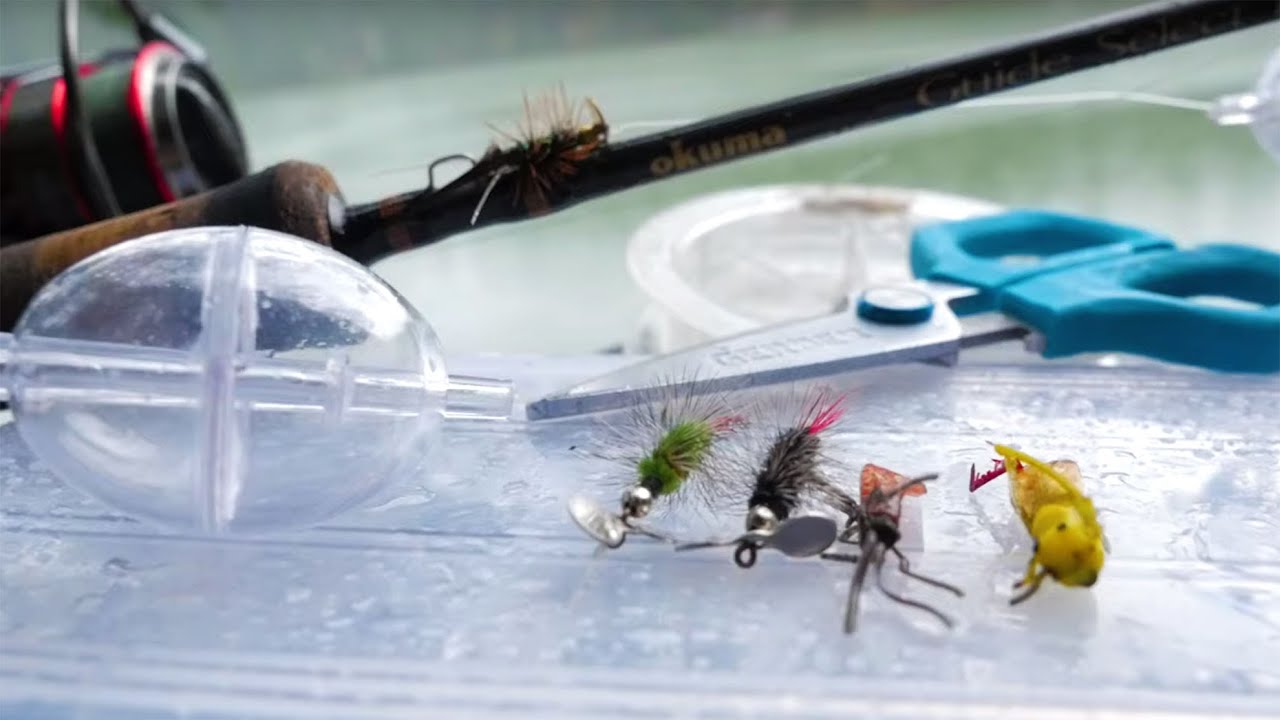Contents
Techniques to Catch Big Fish in Difficult Locations
Hard to access un-fished trout holes or streams often hold large “unblooded” trout that will take quickly and firmly. Learn the techniques for getting at them.
A new technique to catch trout in difficult locations using traditional fishing tackle is heart-stopping as you angle fish at very close quarters.
“Willow Fishing”
This is a technique to catch trout in clear run tributaries off main rivers where you might be locked in by willow trees or bush to the water’s edge (thus “willow fishing”) or there is insufficient room to cast properly. It can also be used when rivers are in flood, and all other fishermen are home, as fish often move up filthy flooded rivers and congregate in compact schools at the mouths of clear spring-fed streams feeding into the flooded main river system. Trout are also far less discerning in these conditions, as the silt-laden floodwaters seem to trigger a frenzied feeding reaction.
Concealment is Critical
Spot your fish or lay in wait opposite a likely pool after crashing through the bush, willows, and barriers to your site. Taking up a position in the lower branches of a tree works well. Wear greens and browns and cover reflective skin so fish are not spooked. Wear a dark cap to shield your eyes from reflected glare over many hours. Polaroid sunglasses are vital so you can read the water. Ideally, fish with the sun behind you. The preferred rod type, a lengthy light fly rod, plays out across the water like a branch, so a naturally colored rod is best.
Gaff or Net is Vital Fishing Equipment
A long-handled gaff or landing net must be used with this technique. Light leaders are also important.
Feathered Wet Lures Are Best
Utilizing artificial feathered lures, because they are light and “move” even when stationary and in the slightest current, drop your line down from above, skid it around the surface like a plumb line, or just drop and let it sit on the bottom or “swim” mid current. When a large trout approaches, tweak it abruptly and then set up a swimming motion by raising the rod vertically or moving it upstream. Short jerks of the line can set up a feeding motion of the lure by disturbing mud as it jerks across the bed. Fish will investigate.
Dry Flies
Dry flies can be “buzzed” above the surface like a hypnotist’s bob, allowing them to occasionally plop onto the water then lift off again, often as the fish comes in. Being denied often makes trout more aggressive next time and they grab hard. Trout find this technique irresistible as it is completely realistic.
Large resident fish in extremely difficult holes and eddies can be caught on the length of a leader using this technique. The trick is to have your gaff or landing net ready and waiting. It is heart-beating stuff. Half the enjoyment is locating your large resident fish and coming back again and again as other fish take up the vacated pool or stream hole.
Fly-rod “Bow and Arrow” Technique
Another trick is to hold the lure firmly between thumb and finger (watch out for the hook), point the rod straight towards your intended landing spot with one arm, held rigidly. Bend the fly rod back hard with the line with the other arm until the line is very tight in an arc over your head. Release the lure suddenly, and let it catapult out over the water to plop naturally into place. This can be done over bushes and shrubs to get into difficult spots where fish are laid up or feeding. The fisherman needs to be well concealed in his tree or bush cover.

